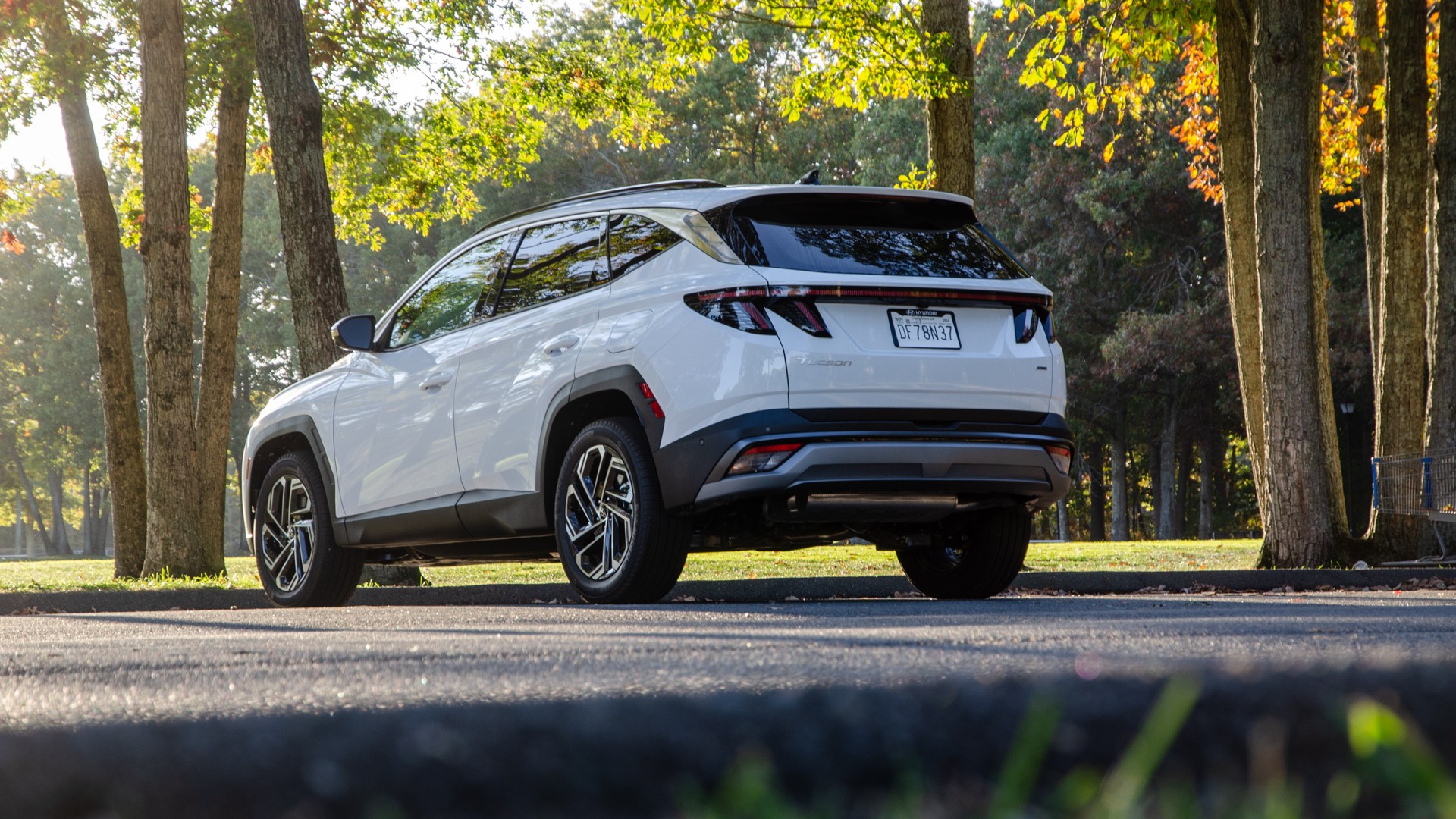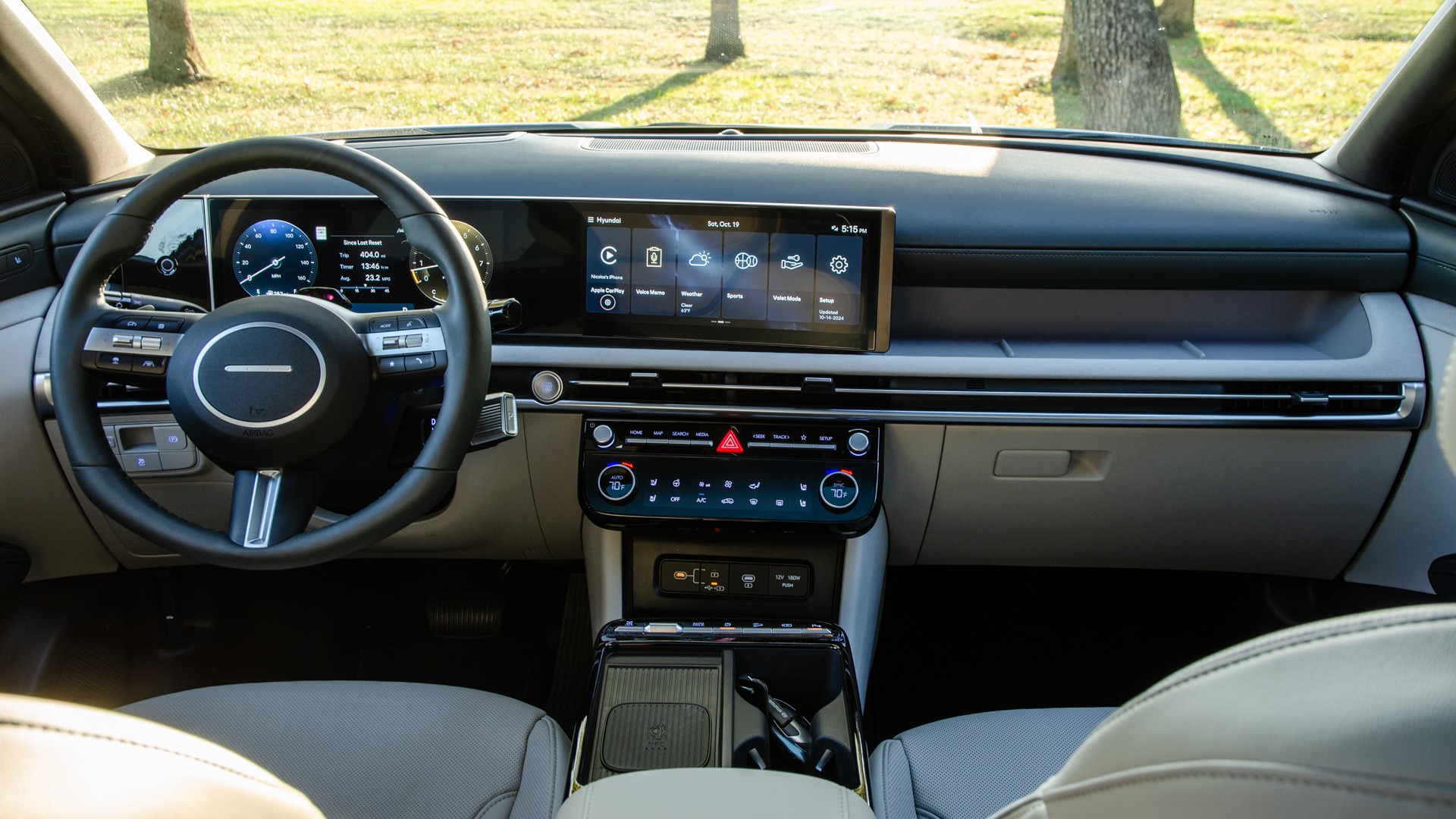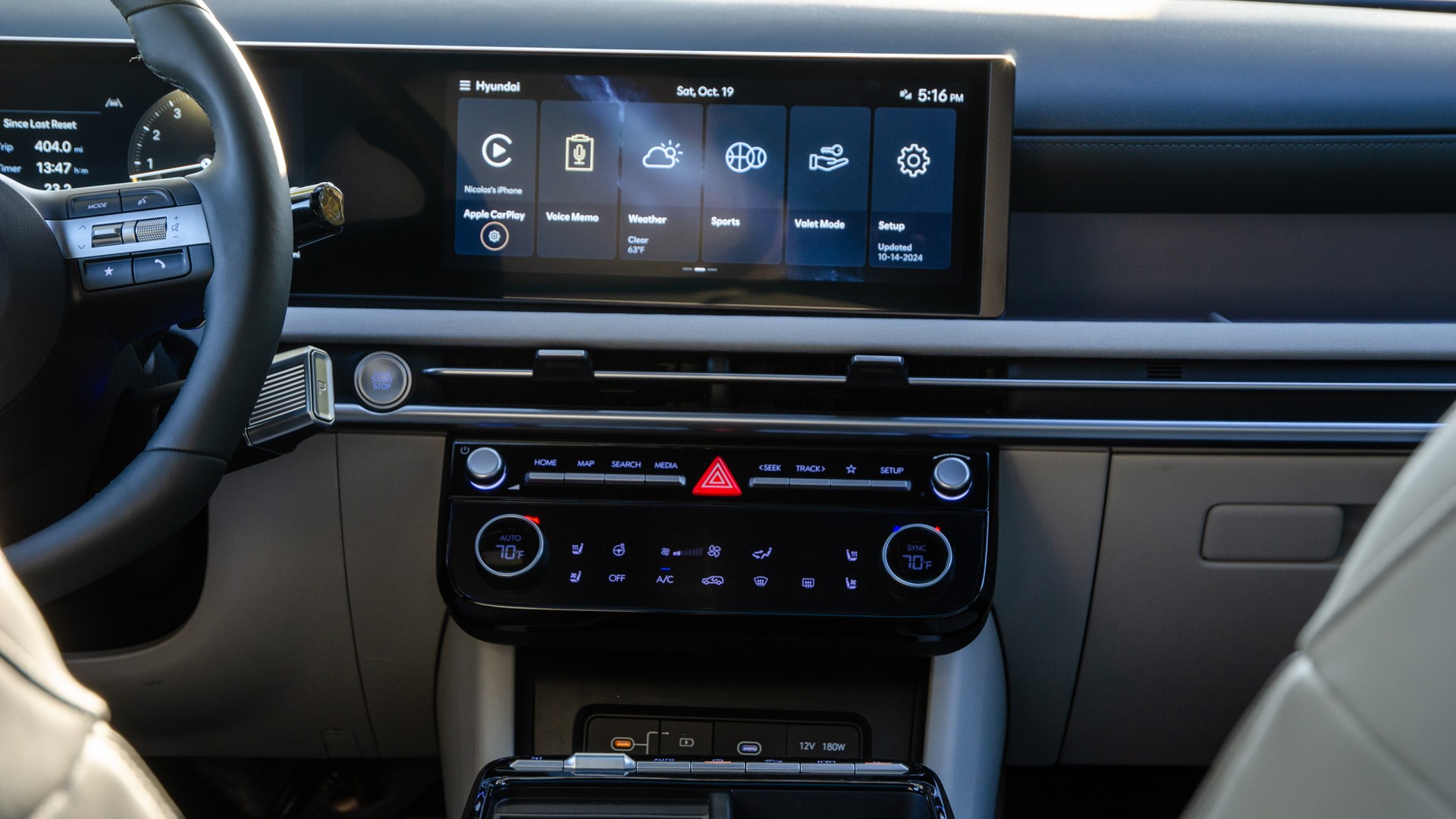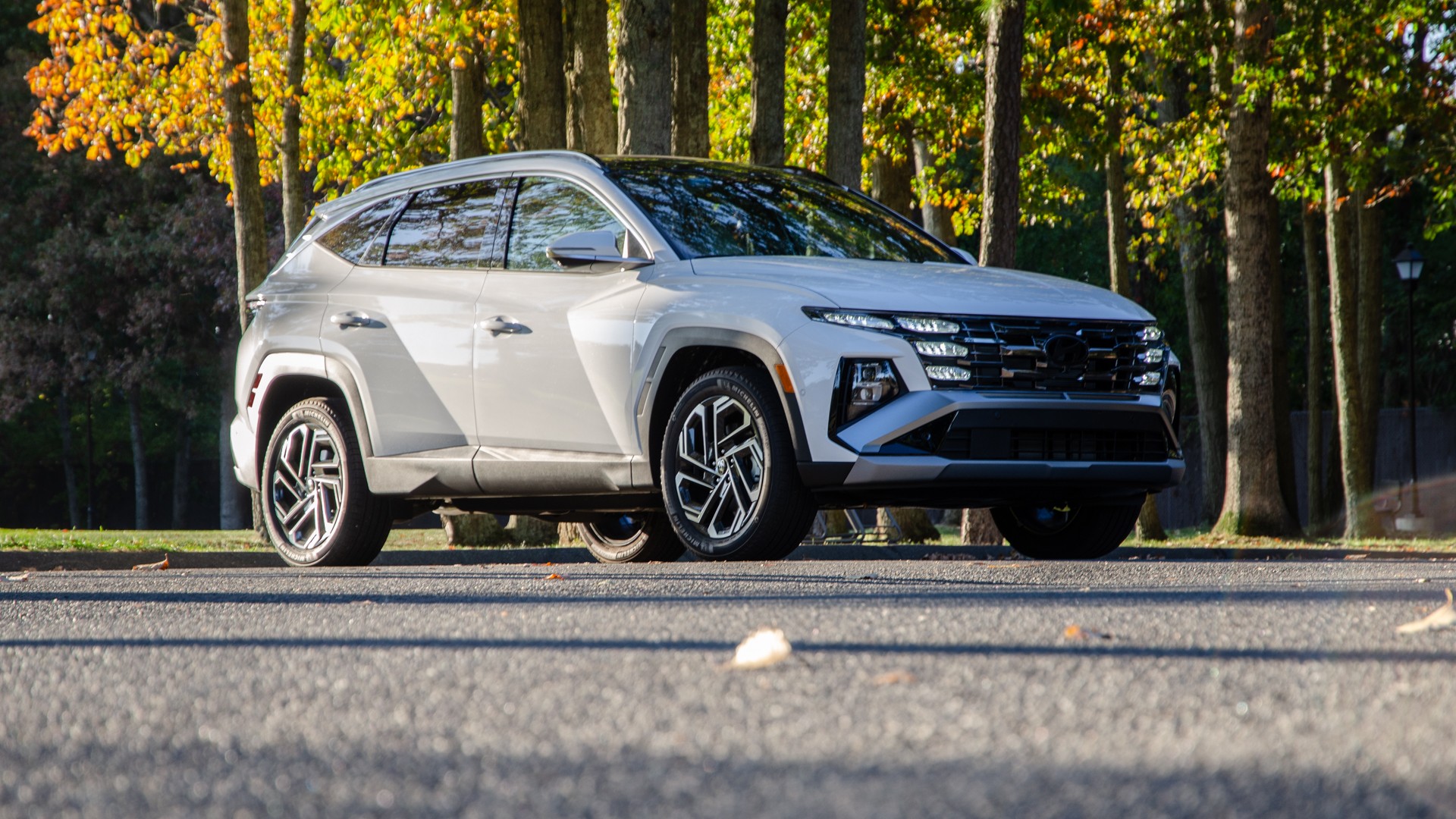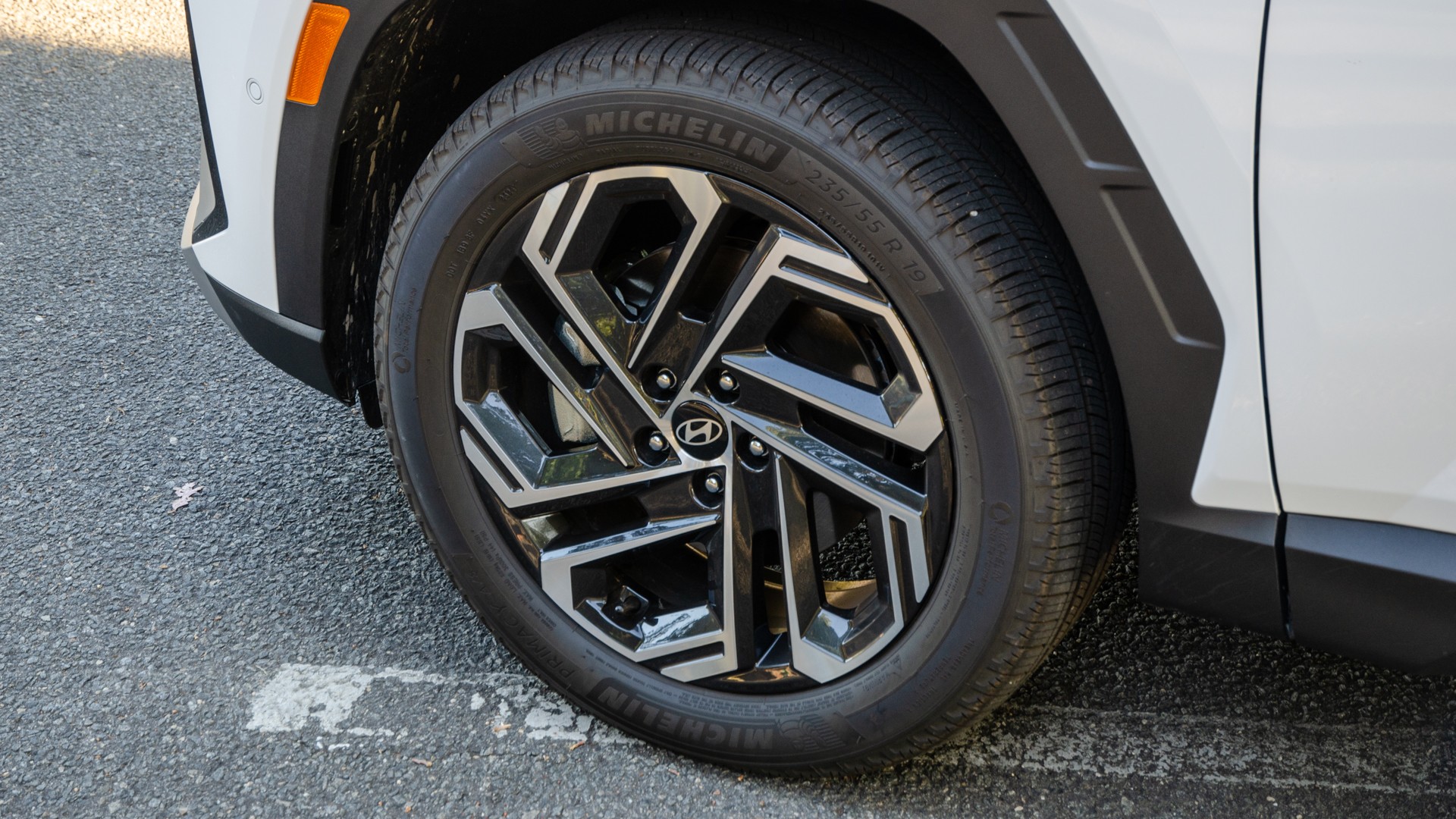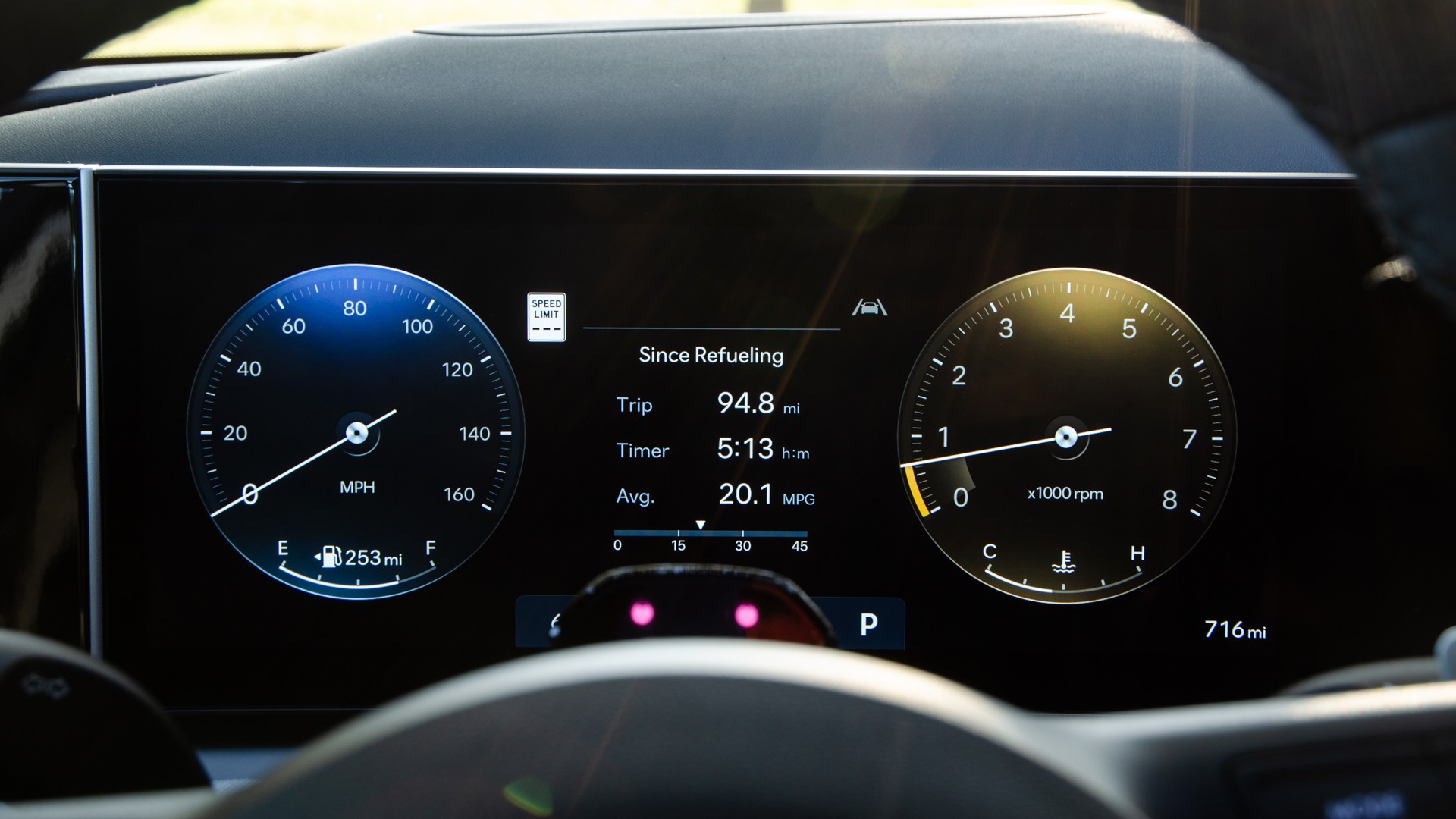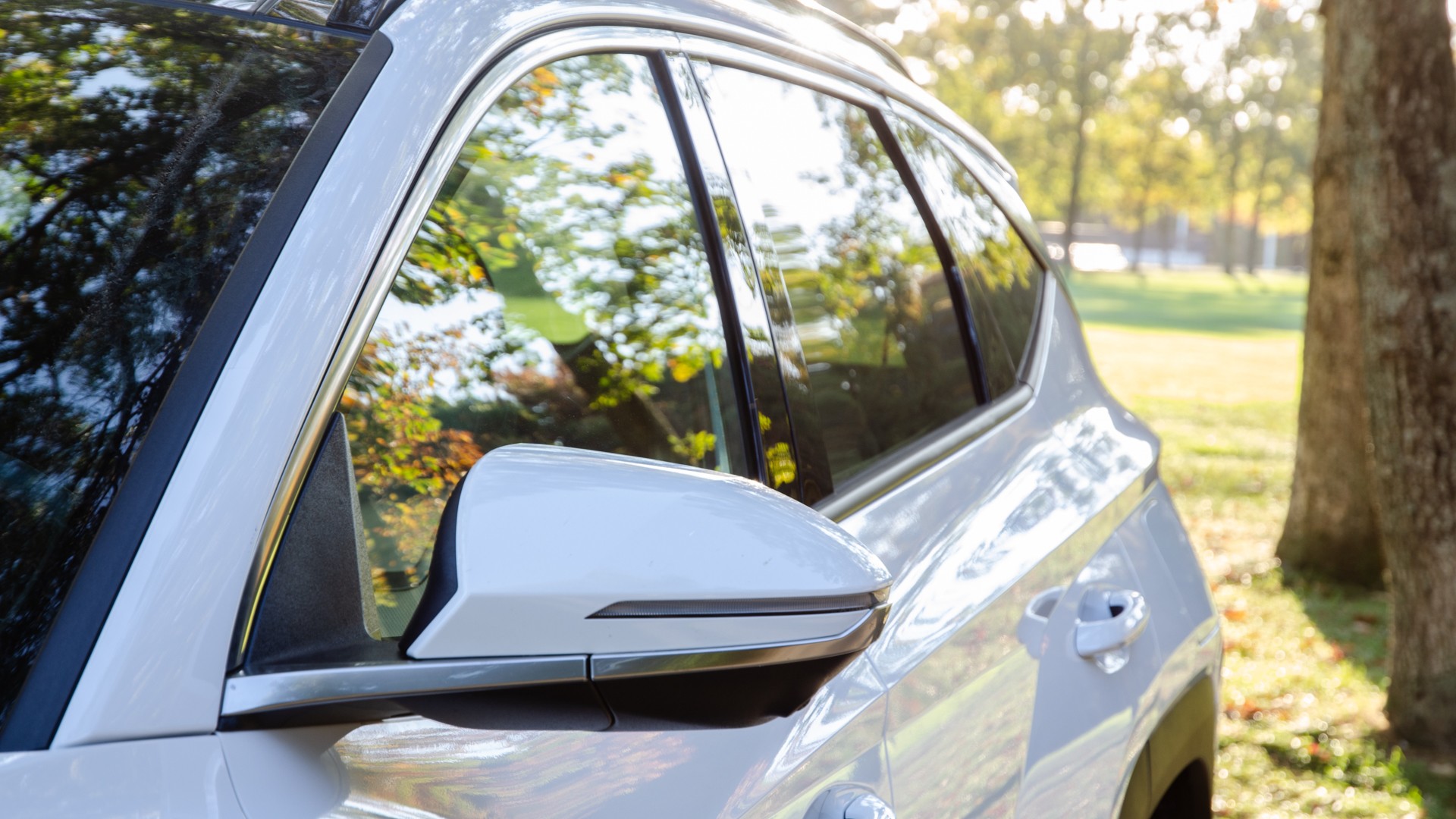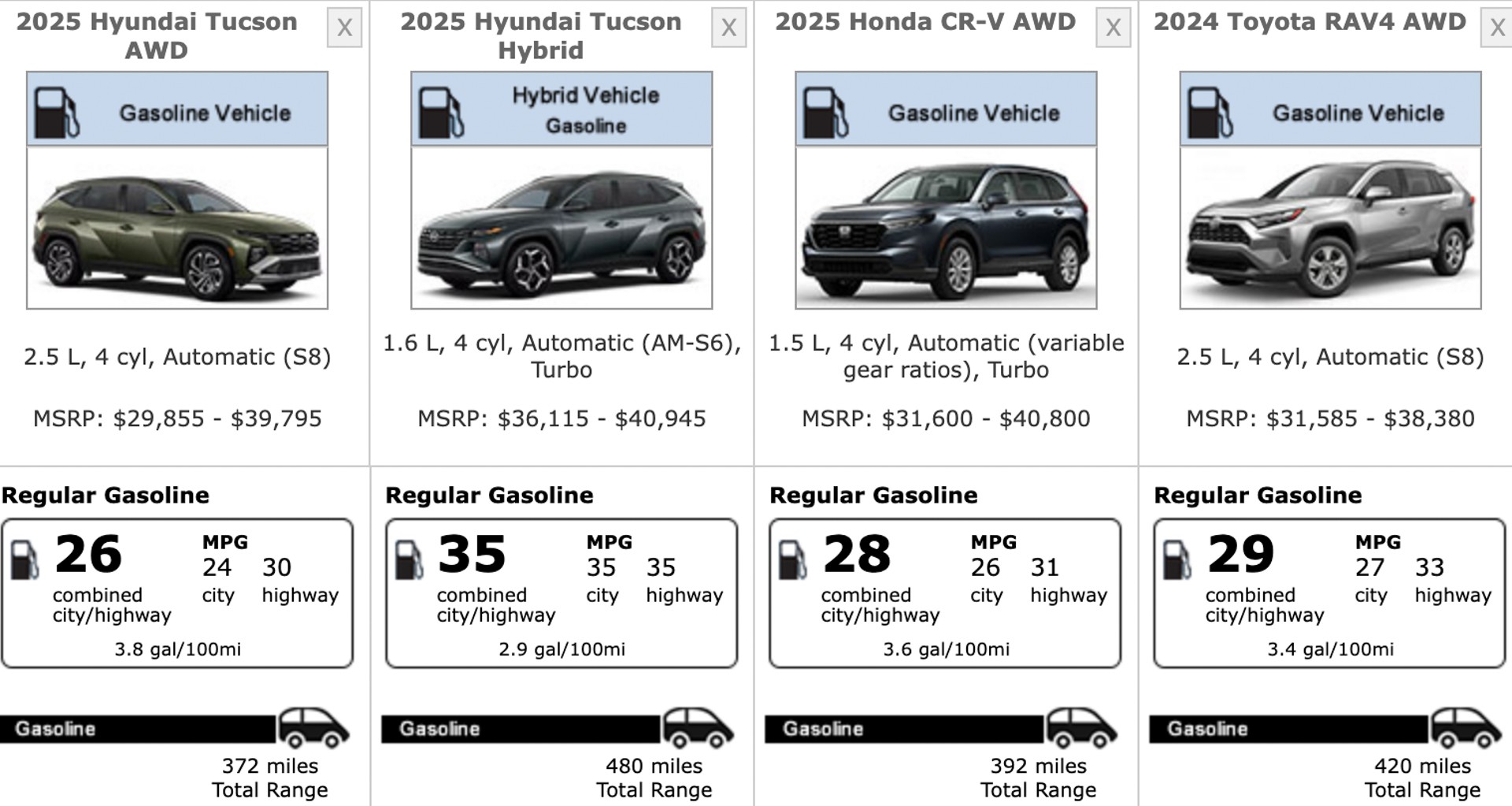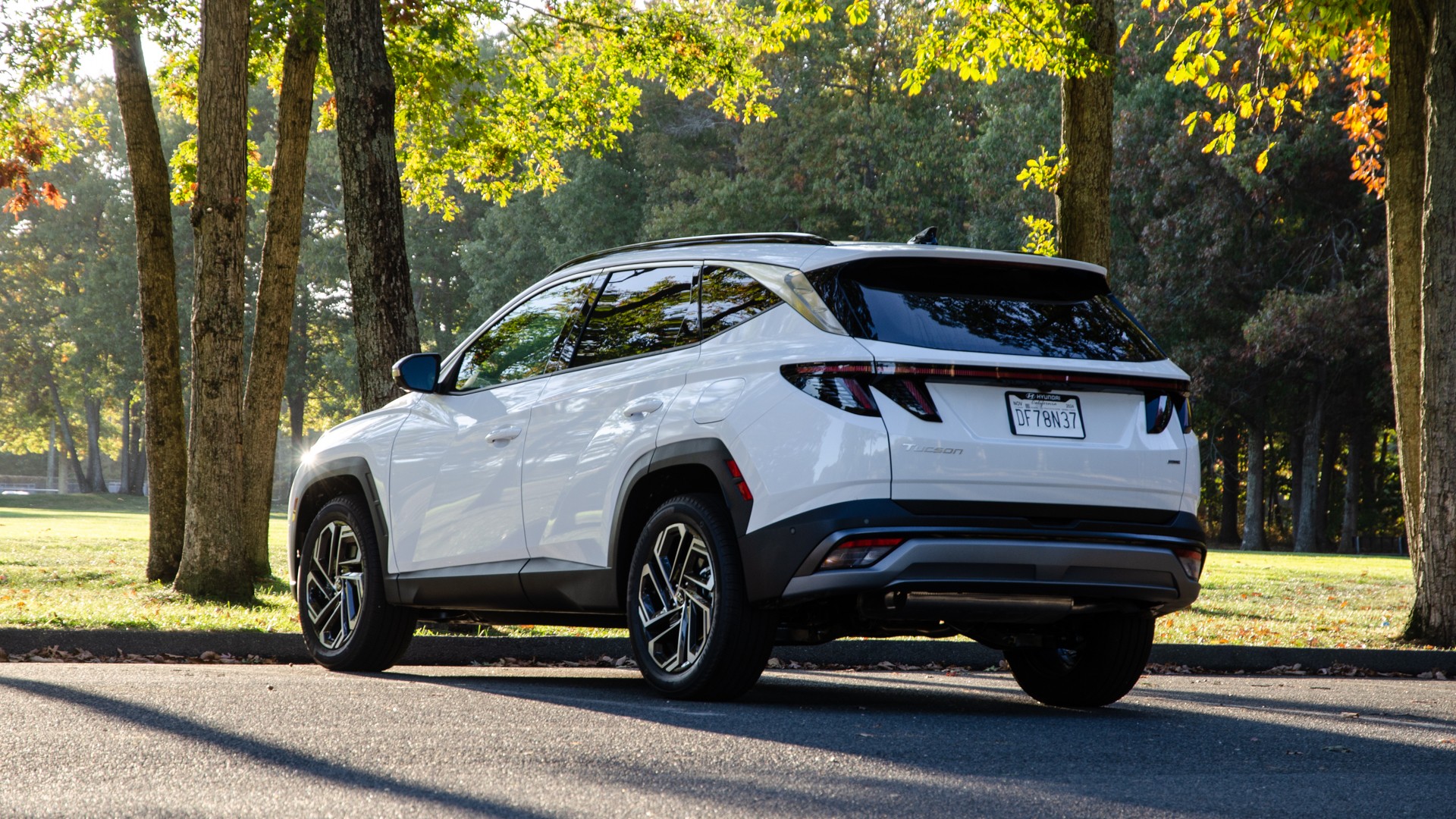Saying goodbye to a trusty appliance, like an old air fryer, can be surprisingly emotional. These dependable workhorses become part of our daily routines, reliably performing their tasks without fuss. The 2025 Hyundai Tucson aims to be that kind of appliance for car owners – a vehicle that consistently and comfortably fulfills its purpose. For those in the market for a no-nonsense, reliable compact SUV, the Tucson has long been a contender. But does the latest 2025 model elevate it beyond mere appliance status to something truly desirable? Let’s dive into the details and explore what the reviews are saying about the refreshed 2025 Hyundai Tucson.
The Hyundai Tucson has carved out a niche for buyers who prioritize practicality and dependability over driving thrills. It’s designed to blend seamlessly into the background, requiring minimal thought while consistently delivering on its core functions. For 2025, Hyundai has focused on enhancing the Tucson’s appeal, particularly in the areas of interior design, technology, and ride comfort. Drawing inspiration from more premium models like the Santa Fe, the 2025 Tucson aims to offer a more upscale experience without a significant price increase. This review will explore if these updates successfully position the 2025 Hyundai Tucson as a leader in the fiercely competitive compact SUV segment, battling it out with stalwarts like the Honda CR-V and Toyota RAV4.
Stepping Up its Game: What’s New in the 2025 Tucson?
In a segment dominated by popular and well-regarded vehicles like the Honda CR-V and Toyota RAV4, standing out requires more than just being adequate. The Hyundai Tucson has historically been a competent and practical choice, but perhaps lacking a distinct edge. The 2025 model year seeks to change that. Hyundai is betting on a combination of a redesigned interior, enhanced technology features, and improved ride quality to elevate the Tucson’s standing and capture a larger share of the market. These upgrades aim to transform the Tucson from a simply “fine” option into a genuinely compelling and even luxurious choice within its class.
While the exterior changes for the 2025 Hyundai Tucson are subtle, they are present. A revised front grille, updated lower fascias, and new wheel designs contribute to a refreshed look. Even the rear wiper has been extended by 75mm, a testament to Hyundai’s attention to detail. However, to the untrained eye, the overall aesthetic remains largely consistent with the previous model. The Tucson retains its distinctive checkerboard grille, stacked headlight arrangement, and a body characterized by numerous lines and angles. Opinions on the Tucson’s styling are subjective, with some finding its bold and somewhat unconventional design appealing, while others might prefer the more conventional and arguably more handsome styling of competitors like the latest CR-V and RAV4.
The interior of the 2025 Tucson marks a significant departure from its predecessor. Moving away from the edgy exterior styling, the cabin presents a more sophisticated, mature, and refined ambiance. The minimalist three-spoke steering wheel exudes elegance, while the prominent dual-12.3-inch curved screen display immediately conveys a sense of high-tech modernity. The cantilevered armrest design adds to the spacious and airy feel of the center console. Mirroring the design of the new Santa Fe, the Limited trim Tucson features a convenient wireless charging tray with a rubberized mat integrated into the armrest. It’s worth noting that this premium armrest and the steering column-mounted shifter are exclusive to the top-tier Limited trim. Lower trims receive a traditional center console with a mechanical shifter, potentially sacrificing some space and streamlined aesthetics. However, for many buyers, this may not be a critical drawback.
The infotainment system in the 2025 Hyundai Tucson is reported to be responsive and user-friendly, with crisp graphics and quick processing speeds. The climate controls strike a balance between touch-sensitive inputs and physical buttons, offering a practical and intuitive interface. Overall, the interior of the new Tucson represents a substantial upgrade, creating an environment that feels notably more premium than previous iterations and punches above its price point.
Driving Dynamics: Comfort Over Exhilaration
Beneath the surface, the 2025 Hyundai Tucson reveals its more budget-conscious origins, particularly in its powertrain options. Unless you opt for the hybrid variant, the standard engine is a 2.5-liter four-cylinder. While this engine provides adequate power for daily driving, generating 187 horsepower and 178 lb-ft of torque, it’s not designed to deliver an exciting or engaging driving experience. Furthermore, the fuel economy, averaging around 26 mpg combined, is merely competitive within the segment and not particularly impressive considering the engine’s lack of performance character. While the engine is reasonably smooth in operation, it reinforces the argument that vehicles in this class, prioritizing practicality over performance, could benefit from electrification. An all-electric Tucson, for instance, could potentially address both the performance and efficiency shortcomings of the standard powertrain.
However, it’s crucial to consider the target audience for vehicles like the Hyundai Tucson. For the majority of compact SUV buyers, outright performance and engine excitement are not primary concerns. Instead, factors such as a quiet cabin, user-friendly technology, and a comfortable ride are often prioritized. And in these areas, the 2025 Tucson excels.
Hyundai has demonstrably improved the Tucson’s ride quality. Where previous Hyundai models were sometimes criticized for a choppy ride, the 2025 Tucson leans towards a softer, more cushioned experience, bordering on “floaty.” While this emphasis on comfort may compromise sportier handling – expect noticeable body roll in corners – it contributes to a relaxed and comfortable ride, particularly well-suited for everyday commuting and passenger comfort. The cabin is also commendably quiet, even at highway speeds, further enhancing the sense of near-luxury refinement. The Tucson, therefore, prioritizes a comfortable and composed driving experience over dynamic handling.
There is a trade-off for this plush ride, particularly at higher speeds. The soft suspension can feel somewhat floaty on the highway, potentially leading to a less planted and more ponderous sensation. The Tucson may also require more steering corrections to maintain a straight line at highway speeds. While not a major flaw, it suggests that the Tucson is most at home in urban and suburban environments, where its comfortable ride and ease of use are most appreciated. It is designed to be a hassle-free and comfortable daily driver, equipped with sufficient technology to satisfy modern car owners, as long as spirited driving isn’t a priority.
Highlights and Drawbacks: Weighing the Pros and Cons
The strengths of the 2025 Hyundai Tucson are largely concentrated in its interior. Hyundai’s new interior design language shines through, creating a cabin that feels surprisingly premium for its price point. Details like the wireless charging pad placement and the well-designed climate controls, with physical knobs and sensibly arranged touch buttons, contribute to a user-friendly and upscale feel. The seats are comfortable, and the overall build quality appears to be above average for the class.
However, the interior isn’t without minor shortcomings. Rear seat space is described as adequate but not exceptionally generous. The digital instrument cluster’s design is considered somewhat cartoonish and potentially less refined by some, although subjective taste plays a role here. The most significant drawback, however, remains the uninspiring standard engine, which, despite its lack of excitement, doesn’t deliver exceptional fuel economy to compensate.
Features, Trims, and Competition: Navigating the Tucson Lineup
Starting at a competitive base price around $30,000, the entry-level 2025 Hyundai Tucson offers a surprisingly generous level of standard equipment. Even the base model includes the large 12.3-inch touchscreen, wireless Apple CarPlay and Android Auto, 17-inch alloy wheels, blind-spot monitoring, adaptive cruise control, and LED headlights. This means that even budget-conscious buyers won’t feel deprived of essential features.
Stepping up to higher trim levels unlocks a range of desirable upgrades. The fully loaded Tucson Limited, as tested, includes features such as a panoramic sunroof, leather seats, a hands-free power liftgate, Bose audio system, heated and ventilated front seats, and the upgraded center console. In Limited trim, the Tucson presents itself as a genuinely well-equipped and appealing vehicle, and with an as-tested price of $41,870, it represents a compelling value proposition within its segment.
While competitors like the CR-V and RAV4 also offer well-appointed interiors in their higher trims, the Tucson’s cabin design is perceived as having a more mature and premium aesthetic. While material quality and build may be comparable, the Tucson’s design and certain unique features set it apart. Hyundai’s blind-spot view monitor, which displays a live camera feed of blind spots in the instrument cluster when signaling, and the leading vehicle departure alert are examples of technology features that enhance the Tucson’s appeal and perceived value compared to its rivals.
Fuel Efficiency: Middle of the Pack
The fuel economy of the standard 2025 Hyundai Tucson is described as “middle-of-the-road.” With EPA ratings of 25 mpg city, 33 mpg highway, and 26 mpg combined for the front-wheel-drive model, it aligns closely with the Honda CR-V and is only marginally less efficient than the Toyota RAV4. However, given the engine’s lack of performance excitement, there’s a missed opportunity for greater fuel efficiency to enhance its appeal. For buyers prioritizing fuel savings, Hyundai offers the Tucson Hybrid, which pairs a turbocharged 1.6-liter engine with an electric motor, boosting both power (231 hp, 258 lb-ft of torque) and fuel economy. The Tucson Hybrid achieves an impressive 35 mpg across city, highway, and combined cycles.
Verdict: A Dependable and Refined Choice
The 2025 Hyundai Tucson is priced competitively within the compact SUV segment. However, its value proposition becomes particularly compelling when considering its features and overall experience relative to its price. The Tucson Limited, in particular, offers a generous array of technology and a level of interior refinement that punches above its weight class. It distinguishes itself as a comfortable, quiet, and tech-forward crossover that feels more premium than its price tag suggests. For buyers seeking a dependable and well-equipped daily driver, the 2025 Hyundai Tucson presents a strong case.
In a crowded market of small, affordable crossovers, the 2025 Hyundai Tucson manages to stand out with its distinctive styling and surprisingly upscale interior. It delivers on the key priorities for most crossover buyers: comfort, quietness, and technology. While it may not ignite passion or excitement, like a reliable appliance, the 2025 Hyundai Tucson is designed to consistently get the job done, comfortably and dependably.
| 2025 Hyundai Tucson Specs |
|---|
| Base Price (Limited as tested) |
| Powertrain |
| Horsepower |
| Torque |
| Seating Capacity |
| Cargo Volume |
| Curb Weight |
| Max Towing |
| Ground Clearance |
| EPA Fuel Economy |
| Quick Take |
| Score |
